
PRINCIPLES OF
ENVIRONMENTAL
CHEMISTRY
Jones & Bartlett Learning Titles in Physical Science
Astronomy Activity and Laboratory Manual
Alan W. Hirshfeld
Climatology, Second Edition
Robert V. Rohli & Anthony J. Vega
Earths Natural Resources
John V. Walther
Environmental Oceanography: Topics and Analysis
Daniel C. Abel & Robert L. McConnell
Environmental Science, Ninth Edition
Daniel D. Chiras
Environmental Science: Systems and Solutions, Fifth Edition
Michael L. McKinney, Robert M. Schoch, & Logan Yonavjak
Essential Invitation to Oceanography
Paul R. Pinet
Essentials of Geochemistry, Second Edition
John V. Walther
Igneous Petrology, Third Edition
Alexander McBirney
In Quest of the Universe, Seventh Edition
Theo Koupelis
Invitation to Oceanography, Sixth Edition
Paul R. Pinet
Louisiana Weather and Climate
Robert V. Rohli, John M. Grymes III, & Anthony J. Vega
Meteorology: Understanding the Atmosphere, Third Edition
Steven A. Ackerman & John A. Knox
Principles of Atmospheric Science
John E. Frederick
Restoration Ecology
Sigurdur Greipsson

World Headquarters
Jones & Bartlett Learning
5 Wall Street
Burlington, MA 01803
978-443-5000
www.jblearning.com
Jones & Bartlett Learning books and products are available through most bookstores and online booksellers. To contact Jones & Bartlett Learning directly, call 800-832-0034, fax 978-443-8000, or visit our website, www.jblearning.com.
Substantial discounts on bulk quantities of Jones & Bartlett Learning publications are available to corporations, professional associations, and other qualified organizations. For details and specific discount information, contact the special sales department at Jones & Bartlett Learning via the above contact information or send an email to .
Copyright 2014 by Jones & Bartlett Learning, LLC, an Ascend Learning Company
All rights reserved. No part of the material protected by this copyright may be reproduced or utilized in any form, electronic or mechanical, including photocopying, recording, or by any information storage and retrieval system, without written permission from the copyright owner.
Principles of Environmental Chemistry, Third Edition is an independent publication and has not been authorized, sponsored, or otherwise approved by the owners of the trademarks or service marks referenced in this product.
Some images in this book feature models. These models do not necessarily endorse, represent, or participate in the activities represented in the images.
Production Credits
Chief Executive Officer: Ty Field
President: James Homer
SVP, Editor-in-Chief: Michael Johnson
SVP, Chief Marketing Officer: Alison M. Pendergast
Executive Publisher: Kevin Sullivan
Senior Acquisitions Editor: Erin OConnor
Editorial Assistant: Michelle Bradbury
Production Editor: Leah Corrigan
Senior Marketing Manager: Andrea DeFronzo
V.P., Manufacturing and Inventory Control: Therese Connell
Composition: CAE Solutions Corp.
Cover Design: Michael ODonnell
Rights & Photo Research Associate: Lauren Miller
Cover Image: Pichugin Dmitry/ShutterStock, Inc.
Printing and Binding: Edwards Brothers Malloy
Cover Printing: Edwards Brothers Malloy
To order this product, use ISBN 978-1-4496-9352-7
Library of Congress Cataloging-in-Publication Data
Girard, James.
Principles of environmental chemistry / James Girard.3rd ed.
p. cm.
ISBN 978-1-4496-5015-5 (alk. paper)
1. Environmental chemistry. I. Title.
QD33.2.G57 2013
628.501'54dc23
2012021748
6048
Printed in the United States of America
17 16 15 14 13 10 9 8 7 6 5 4 3 2 1
Dedicated to my wife, Connie Diamant, the real environmentalist in our home.

Image Vividfour/ShutterStock, Inc.
BRIEF CONTENTS

Image Vividfour/ShutterStock, Inc.
CONTENTS

Image Vividfour/ShutterStock, Inc.
PREFACE
Principles of Environmental Chemistry, Third Edition has been revised and updated in response to comments and suggestions from reviewers and users of the second edition. All chapters have been updated to highlight events and initiatives that have transpired since the last edition, such as:
1. The tsunami in Japan, its causes and effects on Japanese nuclear power industry
2. Deep ocean drilling for oil and the effects of a disaster such as the Deepwater Horizon blowout in the Gulf of Mexico
3. How to reduce soot in diesel truck emissions to meet new regulations
4. Changing the relationship between water use and economic growth in developing countries
5. Canadian tar sands and the Keystone XL pipeline
6. Induced hydraulic fracturing (fracking) and the production of natural gas
7. The future of the thorium nuclear reactor
8. Biofuelsethanol from cellulose
9. The introduction of lifecycle assessments
10. Resource decoupling and the development of the third world
Users of the second edition lamented the loss of the chapter on soil and agriculture () makes its return to the third edition.
In response to reviewers preferences, a new chapter on sustainability and green chemistry has been included. I spent my last sabbatical leave as a Franklin Fellow in the U.S. Department of State. While there, I coordinated the U.S.s report to the United Nations Commission on Sustainable Development (UNCSD). The CSD-18 report, which focused on U.S. initiatives in chemicals, mining, transport, waste management, and sustainable consumption and production, can be found at http://sustainabledevelopment.un.org/index.php?menu=1135. During my time at the Department of State, I was also fortunate to be appointed the U.S. representative to the UNs International Resource Panel. I am pleased that I can share what I learned about sustainability with students using this text. I also want to thank Professor Jonathan Kenny of Tufts University for his review of this new chapter.
I am happy to receive comments and suggestions about the content of this book at .

Chapter Elements
Examples and Exercises Illustrative worked examples, each one accompanied by a challenging practice exercise, are included throughout the text, particularly in the chapters covering basic chemical principles.
Keywords and Concepts Lists of keywords and concepts introduced in the chapter are included at chapters end to help reinforce the most important information.
. Quantitative, review, and discussion-type questions are included.
Additional Sources of Information A bibliography provides sources for the material covered in the chapter and serves as a suggested list for further reading.
Next page
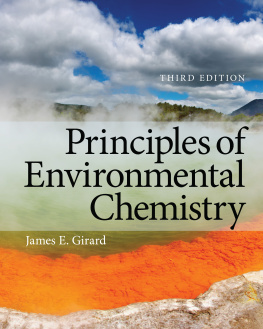
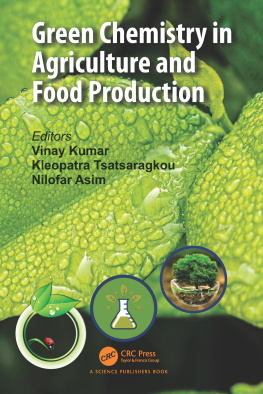

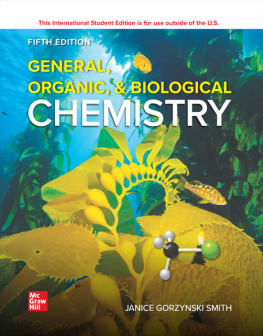


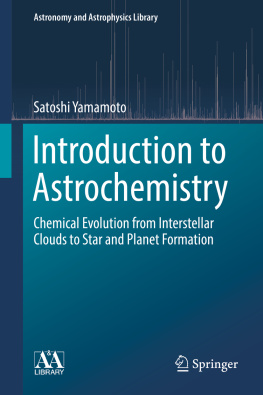
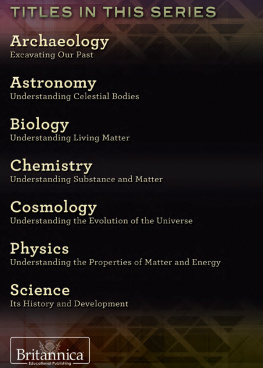






 Chapter Elements
Chapter Elements